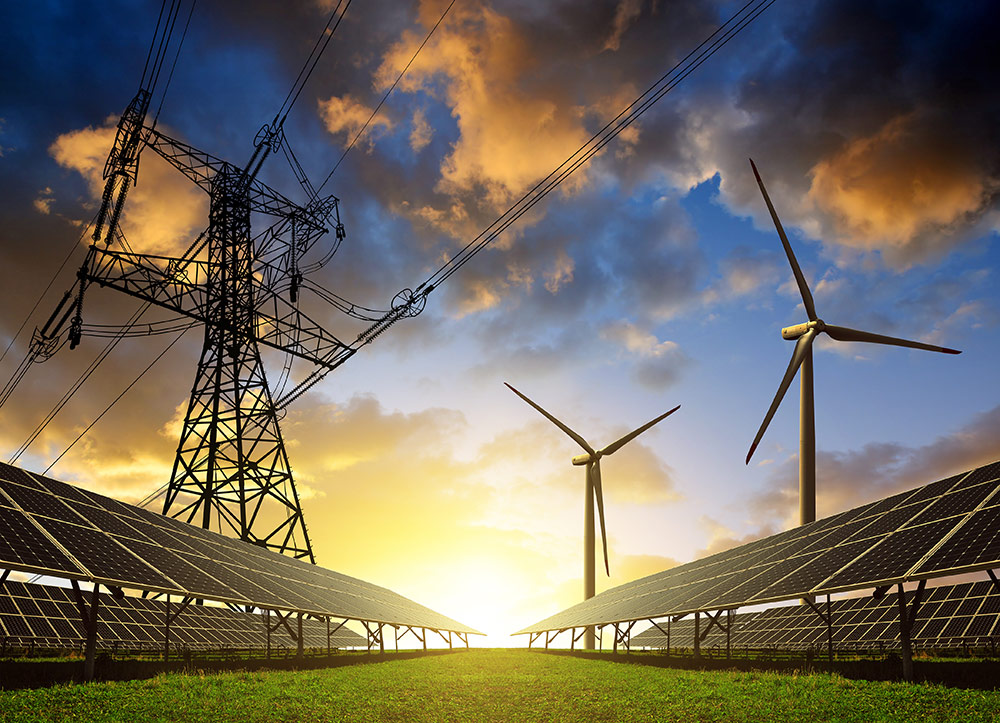The big picture: A revolutionary energy transition fueled by growing renewable power generation is dramatically increase electricity’s usage compared with other energy sources over the next quarter century.
By the numbers: One of the biggest drivers of growing electricity demand in the U.S. is electric vehicles (EVs). EV sales have grown 230% over the last four years, from 230,761 in 2019 to nearly 764,000 in 2022, and BloombergNEF estimates that EVs will account for half of U.S. car sales in 2030.
Why it matters: Electricity’s role in supplying an increasing share of our power needs promises to improve the environment and enhance efficiency, among other benefits. But transforming our grid infrastructure to handle the increasing demand will present near-term challenges and potential disruptions.
The bottom line: To manage this monumental power shift and optimize its opportunities, utilities are increasingly embracing new tools and technologies. None are more important than artificial intelligence (AI).
Go deeper: Read our insights below.
An accelerating effort to drastically reduce fossil fuels in favor of an electrification revolution powered by renewables in the U.S. promises to dramatically shift our primary source of “final energy” — the energy people buy, receive and use for end consumption. Electricity could provide close to 50% of final energy to U.S. power users by 2050 versus 21% in 2018, according to the Electric Power Research Institute. That’s not hard to envision, assuming the continued growth in renewable power generation and the adoption of policy measures to restrain fossil fuel use, such as bans on natural gas hook-ups in new buildings.
Deriving more of our energy from electricity is expected to enhance the efficiency and flexibility of the grid, improve air quality and human health, reduce overall energy consumption and consumer costs, and significantly lower greenhouse gas emissions. But because the existing grid was not designed to handle this additional demand, achieving those benefits presents challenges for utilities, which will need to embrace tools like artificial intelligence (AI) to manage the change and monetize opportunities. AI, for example, can predict demand based on a variety of external factors and dynamically adjust the grid to support anticipated demand — before there is an issue.
Consider ballooning EV sales in the U.S., which have grown 230% over the last four years, from 230,761 in 2019 to nearly 764,000 in 2022. Additionally, BloombergNEF estimates that EVs will account for half of U.S. car sales by 2030.
To illustrate the effect that EV demand is having on the grid, we need only to look at California. Not only does California lead the country in EV registrations by a nearly two-to-one margin over the next closest state, it also announced a plan to ban new gas-powered car sales by 2035. But amid a late-summer heatwave last year, California’s grid operators asked residents to refrain from charging EVs and using large appliances to help protect grid reliability in the late afternoon and early evening due to less solar energy availability.
One way that electricity producers could strengthen the grid and avoid a similar situation in the future would be to use AI to identify how many homes on a street are charging EVs to help drive the timing and pricing of power. That could include offering very low prices when the grid is carrying excess capacity and very high prices during periods of extreme demand.
Potential Use Cases
The day when utilities have the capability to implement such a solution is upon us. Power producers have been evaluating and testing AI for some time, and many are leveraging the tool along with extensive customer data to transform operations by:
- Enhancing customer experience, engagement and satisfaction
- Determining the services that customers value most
- Forecasting energy loads
- Optimizing power generation efficiency and power production decision-making
- Improving transmission and distribution processes
- Supporting demand management
- Enhancing maintenance tasks
More specifically, we have begun to see a transition from centralized power generation and distribution to a decentralized model in which power is generated by smaller “microgrids” that are local and independent, such as solar or wind farms. Microgrids are growing in popularity because they can more readily integrate renewable sources of energy into the traditional grid and can provide energy security during emergencies.
As these producers grow in importance, microgrid control systems are using AI and machine learning (ML) to manage energy flows among homes, businesses, storage systems, renewable sources, and the conventional grid and new microgrids to optimize energy usage.
Additional AI-fueled benefits for utilities and grid operators include:
Theft deterrence — AI can help utilities detect theft or fraud by identifying and flagging anomalies or patterns on the grid that indicate the misrepresentation of energy data or usage.
Energy trading — As energy markets become more liquid, traders can make more informed buying and selling decisions based on AI and ML power demand predictions and real-time price information.
Energy storage — The global energy storage market is projected to grow at an annual compounded rate of 23% through 2030, and the U.S. leads the Americas region in storage capacity based on gigawatts. The use of AI in conjunction with the storage systems can help utilities manage energy more efficiently. Energy storage is also being used to create virtual power plants, which will allow utilities to deliver energy even when they lack adequate generation to meet demand. Ultimately, the ability to store energy will reduce the need for new power plant construction.
Predictive analytics — Power producers can use AI to predict changes in future energy demand, enabling companies to better plan for future infrastructure needs. AI can also predict when machines or equipment are likely to fail, which could help prevent outages, unexpected maintenance and the replacement of critical assets.
Smart grids — Similarly, energy companies can use AI to collect and leverage energy data from various devices connected to the grid to develop energy profiles of their customers and monitor energy usage. In conjunction with automated demand response systems, this solution would notify utilities when to turn off the flow of energy to certain devices during peak hours, saving homeowners and energy companies money.
Safety net expansion — Currently, only 6% of all energy efficiency spending is dedicated to programs that help low-income customers pay their power bills. By leveraging AI to improve data visibility, utilities can better allocate resources across a wider economic spectrum and capture eligible customers who have failed to benefit from the initiatives.
Prepare for Change Today
The momentum behind electrification in the U.S. is providing utilities and their customers with untold potential benefits, from cheaper and more efficiently managed energy to a greener environment. But such a revolutionary transition will most likely be at times as disrupting as it is promising. Accordingly, power producers and grid operators alike must harness new and advancing tools like AI not only to manage change, but also to chart a path for growth.






